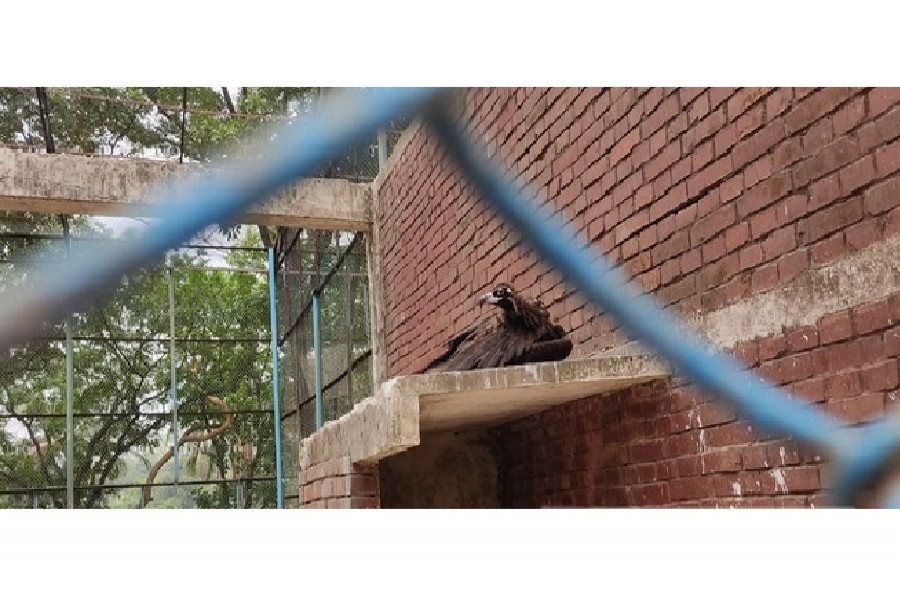
Published :
Updated :

A few decades ago, vultures snatching chicks or scavenging the remains of dead cows were a common sight in Bangladesh. But now even the National Zoo in Dhaka’s Mirpur appears to be fighting a losing battle to save the endangered species from dying out.
The authorities have failed to get the few large birds, which are nearing the end of their lifespans, to breed in captivity.
“The vultures have nearly died out,” said Dr Abdul Latif, curator of the Mirpur zoo.
“The purpose of our zoo is not simply to display wildlife for entertainment, but to preserve them too. But where would we get vultures? You can’t find them anywhere in our country.”
Various attempts to get them to breed have failed, Latif said, and it isn’t possible to take any new initiative to protect them because they are already an endangered species.
The vultures at the Mirpur Zoo are bent by age, either sitting quietly in their cages or feebly beating their wings as if they want to be ready to fly whenever they get the chance, according to bdnews24.com.
Vultures were first brought to the zoo in 1971. The authorities brought in three of the birds. Four others captured across the country have since been brought to the zoo. In 2016, one vulture died of old age and currently the zoo has six living specimens.
Four of the remaining vultures are from the Bengal species, which used to live in various parts of Bangladesh and had a mix of black and white feathers.
Two others are of the cinereous species, which is found in temperate areas across Asia and Europe and has predominantly black fathers.
But both species are on the verge of dying out.
The average lifespan of a Bengal vulture is between 35 to 40 years, while that of the cinereous variety is 39 years.
All of the vultures currently at Mirpur zoo are past those ages, authorities say. Of the six remaining vultures, three are male and three are female, but they have not bred once.
Vultures of the Bengal variety make nests in Shimul and banyan trees between March and October and usually lay eggs around October. It takes 40 to 45 days for the eggs to hatch.
Vultures of the cinereous variety breed from January to April and lay two eggs during mating season. The eggs hatch after 50 to 56 days.
“Breeding is natural,” curator Latif said. “We’ve also taken additional steps to make them more comfortable, regulate their eating habits and fed them the appropriate food and vitamins to stimulate their sexual habits. But we’ve had no success.”
“They are used to living in the wild. They change once they are kept in cages. Some animals can still breed, but others have difficulty.”
Zoo officer Baharul Islam Talukder also believes the vultures cannot breed because they are kept in captivity.
“Our cages can’t provide them the space they need to fly,” he said. “They need space, woodland and a natural environment for breeding, and the zoo cannot provide that.”
The birds, which are known for their keen eyesight and sharp claws, are currently among Bangladesh’s endangered species, but some can still be seen in the north, said Baharul.
“We can save them from extinction if we can set up a preservation area with the appropriate environment and food,” he said.
Latif believes people have played a part in the diminishing of the vulture population.
“They are used to feeding on dead cattle. In the past, you could see them feeding on dead cows. But now you don’t see them much in rural areas. Cows die, of course, but they’re usually buried now.”
That means vultures do not have enough food and it becomes difficult for them to survive.
“But, as this is the National Zoo, we have taken that into consideration and are trying to preserve them. The vultures at the zoo are given 500 gm of beef a day,” Latif said.


 For all latest news, follow The Financial Express Google News channel.
For all latest news, follow The Financial Express Google News channel.